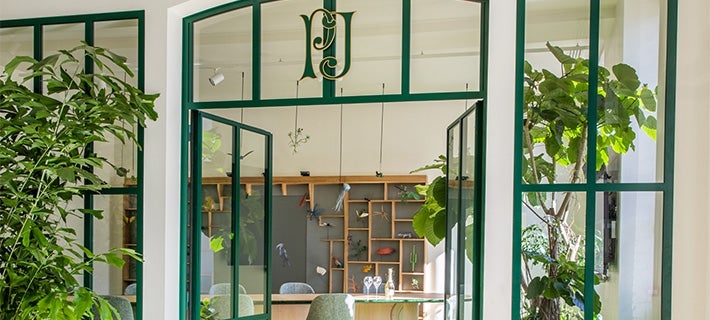

The terroir, the birthplace of champagne
France’s Champagne region is criss-crossed by rows of vines, producing the grapes that are used to make champagne. Combining limestone soils and a hilly topography with a climate shaped by both Oceanic and Continental influences, this terroir provides the ideal conditions for champagne’s signature grape varieties to thrive.
Chardonnay, the flagship variety of Perrier-Jouët, is particularly at home here. The chalky soils help to bring out the natural minerality, freshness and acidity of the grapes, imbuing the House’s range of signature cuvées with their ineffably elegant floral notes.

Perfecting the harvest
From the harvest to the blend
She also decides on the proportion of reserve wine to be added to the blend. Reserve wines are held back from previous years, allowing for total consistency of style, year after year.
For each of the signature cuvées – Brut, Blanc de Blancs and Rosé – Séverine Frerson sets out to achieve total harmony of textures and flavours in a singular blend, while remaining true to the House’s distinctive floral style – sometimes delicate, sometimes livelier, but always impeccably elegant.

The House cellars
To truly understand how champagne is made, it is important to appreciate the value of the time the wines spend in the House’s cellars. It is here, over a period of many months, that the aromas come to the fore. This is also where the famous bubbles make their appearance.

Second fermentation
They get a little help from a nectar known as the liqueur de tirage, a mixture of sugar, wine and yeast which launches the process of bubble formation, known as prise mousse. And so secondary fermentation begins.

Time to rest
The champagnes are then left to develop in peace for a few more years, allowing their full aromatic complexity to emerge. The bottles are placed in racks with the necks pointed diagonally downwards, and regularly turned by our master winemakers.

The finishing touch before tasting can commence
After several years of ageing, it is time to disgorge the bottles. During this crucial stage in the process, the lees which have accumulated in the necks of the bottles are removed and replaced with liqueur de dosage, which will help to define the style of the nascent champagne.
It falls to cellar master Séverine Frerson to determine the ideal moment to conduct this operation, which opens up the final chapter in the champagne’s formative journey. Dosage imbues each of Perrier-Jouët’s distinctive cuvées with a uniquely crisp, dry character, like so many expressions of the House’s legendary si







